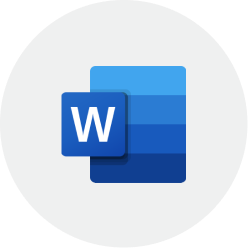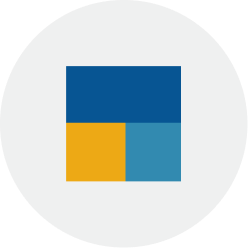e-Accounting Course
Institute In Dwarka Mor
Ess Computer Institute is your superior destination for professional training in Dwarka Mor for the best eAccounting course and banking course.
Book You Demo Class
12-Months Course Duration
1000+ Learners Trained
Guaranteed Placement
Guaranteed Certification
12-Months Course Duration
5000+ Learners Trained
Guaranteed Placement
Guaranteed Certification
Course Curriculum
- Operating System Basics
Desktop Environment:
1. Understanding the Start Menu and Taskbar.
2. Navigating system folders: Documents, Downloads, and Pictures.
File Management:
1. Creating, Renaming, and Deleting Files/Folders.
2. Understanding File Extensions and Types.
OS Applications : ms paint,notepad,wordpad - Microsoft Word
Home Tab:
Font Formatting: Bold, Italic, Underline, Font Size, and Color.
Paragraph Formatting: Alignment, Line Spacing, Indentation, Bullets,
and Numbering.
Styles: Applying and Modifying Styles.
Insert Tab:
Inserting Tables, Pictures, Shapes, and SmartArt.
Adding Headers, Footers, and Page Numbers.
Creating and Formatting Tables.
Design Tab:
Document Themes and Styles.
Page Backgrounds: Colors, Watermarks, and Borders.
Layout Tab:
Setting Margins, Orientation, and Size.
Paragraph Spacing and Indentation.
Column Layouts and Page Breaks.
References Tab:
Inserting Table of Contents, Footnotes, and Endnotes.
Adding Citations, Bibliography, and Captions.
Managing Sources and Cross-References.
Mailings Tab:
Creating Mail Merge Documents for Letters, Labels, and Envelopes.
Setting Up Recipients and Merging Fields.
Previewing and Completing the Mail Merge.
Review Tab:
Spelling & Grammar Check.
Using Thesaurus and Word Count.
Track Changes, Comments, and Comparing Documents.
View Tab:
Document Views: Read Mode, Print Layout, and Web Layout.
Show/Hide Ruler, Gridlines, and Navigation Pane.
Managing Windows: Split, Arrange, and Switch - Microsoft Excel
Introduction to Excel:
Understanding the Excel Interface: Ribbon, Workbook, Worksheets.
Basic Data Entry: Numbers, Text, Dates.
Formats of Cells:
Formatting Cells: Font, Alignment, Number, Border, Fill, and
Protection.
Conditional Formatting: Applying Rules, Using Data Bars, Color
Scales, and Icon Sets.
Working with Cells:
Inserting, Deleting, Merging, and Splitting Cells.
Protection of Excel Data: Locking Cells, Protecting Worksheets, and
Workbooks.
Working with Charts:
Creating and Customizing Charts: Column, Line, Pie, Bar.
Formatting Chart Elements: Titles, Legends, Axes, Data Labels.
Formulas and Functions:
Basic Arithmetic: SUM, SUBTRACTION, MULTIPLICATION, DIVISION.
AVERAGE Formula, RANK Function.
Conditional Functions: IF, COUNTIF, SUMIF.
Advanced Conditional Functions: COUNTIFS, SUMIFS with Multiple
Conditions.
Lookup Functions: VLOOKUP, HLOOKUP, LOOKUP.
Fixing Formulas: Absolute and Relative References.
Financial Functions: PMT (Per Month Installment Calculation), Simple
Interest Calculation.
Running Total: Creating a Cumulative Sum.
Text Functions: CONCATENATE, LEFT, RIGHT, MID, UPPER, LOWER,
PROPER.
Rounding Functions: ROUND, ROUNDUP, ROUNDDOWN.
Worksheets:
Managing Worksheets: Inserting, Deleting, Renaming, Moving, and
Copying.
Formatting Worksheets: Headers, Footers, Page Setup, and Printing.
Practical Applications:
Mark Sheet Creation: Using Formulas to Calculate Totals, Averages,
and Grades.
Payroll Sheet Creation: Managing Salaries, Taxes, and Deductions.
Bills Creation with GST: Designing and Calculating Tax in Excel.
Attendance Sheet Format: Tracking and Analyzing Attendance Data - Microsoft PowerPoint
Creating Presentations:
Selecting Themes and Layouts.
Inserting and Formatting Text, Images, and Shapes.
Adding and Arranging Slides.
Design and Formatting:
Using Slide Master for Consistent Design.
Applying Transitions and Animations.
Customizing Slide Backgrounds and Themes.
Multimedia and Interactivity:
Embedding Videos and Audio.
Creating Hyperlinks and Action Buttons.
Designing Interactive Presentations.
Final Project:
Comprehensive Project Combining Word, Excel, and PowerPoint.
Creating Creative Templates and Resume Format in MS WORD
- Introduction to Excel
Excel Interface Overview
1. Ribbon, Toolbars, and Key Shortcuts
2. Customizing the Excel Interface
Basic Excel Operations
1. Creating, Saving, and Navigating Workbooks
2. Understanding Cells, Rows, Columns, and Ranges
Arithmetic and Logical Operations
1. SUM, AVERAGE, MIN, MAX
2. IF, AND, OR, NOT
Text Functions
1. CONCATENATE, TEXTJOIN, TRIM, LEN
2. FIND, REPLACE, UPPER, LOWER
Data Entry Techniques
1. AutoFill, Flash Fill
2. Data Validation and Dropdown Lists
Formatting Techniques
1. Number Formatting, Custom Formats
2. Conditional Formatting Basics
Managing Worksheets
1. Adding, Deleting, and Moving Sheets
2. Grouping and Linking Worksheets
Introduction to Sorting and Filtering
1. Custom Sorts, Advanced Filters
2. Using Subtotals
Basic Charts
1. Creating and Customizing Charts
2. Using Sparklines for Data Visualization
Lookup & Reference Functions
1. VLOOKUP, HLOOKUP, XLOOKUP
2. INDEX and MATCH
Date & Time Functions
1. TODAY, NOW, DATEDIF
2. NETWORKDAYS, WORKDAY
New Excel Formulas in MS Office 2024
1. TEXTSPLIT: Splitting text strings into arrays.
2. TEXTBEFORE and TEXTAFTER: Extracting text based on delimiters.
3. LAMBDA: Creating custom functions.
4. o LET: Storing intermediate calculations and values.
5. o ARRAYTOTEXT: Converting an array to text format. - Advanced Sorting and Filtering • Sorting by Custom Lists
- Introduction of Tally
- Basics of Accounting
- Formation of Company
- Masters of Tally
- Accounts Info
- Single and
- Multiple Ledgers
- Alteration of Ledgers
- Deletion of Ledgers
- Groups of Tally
- Inventory Details
- Stock Groups, Categories, and
- Stock Items
- Vouchers Entries
- Company Features Details
- Payment, Receipt, Journal, and Contra
- Voucher Mode and Invoice Mode
- Sale and Purchase Invoices
- Debit and Credit Notes Details
- Order Processing
- Purchase and Sales Order
- Processing
- Purchase and Sales Challan
- Rejections
- Invoicing
- Returns and Payments/Receips
- Modes of Discounts
- Manufacturing of Goods
- Purchasing of Goods
- Bills of Material
- Voucher Creations
- Manufacturing Details
- Payroll Maintenance
- Employees Group, Categories
- Employees Details
- Units
- Attendance Heads
- Pay Heads
- Attendance of Employees
- Payroll Voucher Details
- Analysis of Data
- Balance Sheet
- Profit and Loss and Trial Balance
- Stock Details and Summary
- Day Book
- Outstanding’s and Payables Analysis
- Godown Management
- Taxation
- VAT: Payable, Refundable, and Multi VAT
- CST
- Service Tax
- GST (Goods and Services Tax)
- Introduction of GST
- Establishment of
- Tally
- Components of Tally
- Dealers of Market
- Rules and Rates of GST
- Benefits of GST
- Statutory and
- Taxation
- Goods and Services Treatment in Tally
- Inter-State
- Intra-State
- Multi GST
- GST with Discounts
- GSTIN Details
- Printing of
- Invoicing
- Analysis of GST
- Computation of
- GST
- Payment
- Transactions of
- GST
- TDS
- Practical
- Problems of Tally
- Worksheet
- Post dated voucher entry
- Interest calculation
- Job costing
- Cost centers
- Price level/multiple price level
- Sale of assets with depreciation
- Zero / actual valued
- Bills transection in voucher mode
- Export & import
- Company backup/ restore
- Logo
- Multi-Currency
- Invoice printing
- Cheque printing
- Module 1: Introduction to Busy Accounting Software
1. Overview of Busy Accounting Software
2. Installation and Setup
3. Understanding the User Interface
4. Basic Accounting Concepts Refresher (for non-accounting students)
5. Setting Up Company Profile
6. Creating Ledgers and Groups
Module 2: Basic Features and Functionality
1. Voucher Entry (Sales, Purchase, Payment, Receipt)
2. Inventory Management Basics
3. Stock Groups, Categories, Items
4. Unit of Measure
5. Batch Management
6. Managing Debtors and Creditors
7. Generating Basic Reports
8. Trial Balance
9. Profit & Loss Account
10. Balance Sheet
11. Introduction to GST in Busy Software
Module 3: Advanced Features
1. Multi-Currency Accounting
2. Budgeting and Control
3. Cost Centers and Cost Categories
4. Bill of Material (BOM) in Inventory
5. Handling Purchase and Sales Orders
6. Reconciliation of Bank Accounts
Module 4: GST Compliance and Reporting
1. Setting Up GST in Busy
2. Creating GST-compliant Invoices
3. Input Tax Credit (ITC) Management
4. Filing GST Returns
5. Generating GST Reports
Module 5: Payroll Management
1. Setting Up Payroll in Busy
2. Creating Employee Records
3. Payroll Processing and Salary Slips
4. Statutory Deductions (PF, ESI, etc.)
5. Payroll Reports and TDS Calculation - Module 6: Data Security and Backup
1. User Management and Permissions
2. Data Backup and Restore Procedures
3. Auditing Features in Busy
4. Data Migration to and from Busy
Module 7: Customization and Integration
1. Customizing Reports and Invoices
2. Integrating Busy with Excel and Other Tools
3. Importing and Exporting Data
4. Using Busy on Multiple Devices/Networks
Module 8: Case Studies and Practical Exercises
1. Real-life Business Scenarios
2. Practical Exercises on Day-to-Day Accounting Tasks
3. Simulated Case Studies for GST Filing and Payroll Processing
4. Troubleshooting Common Issues

MERN Stack Development: This well-liked open-source technology stack makes it possible to develop dynamic websites that are scalable, reliable, and effective. What is MERN stack? How does it function? How are these apps organized on the contemporary internet? How everything functions internally and how they are hosted. We’ll pay close attention and comprehend everything!
This course aims to give you the complete knowledge and practical skills what you need to design robust and scalable web applications, regardless of your level of experience Whether you’re a developer with experience hoping to upgrade your skills or someone just attempting to get started.
- Operating System Basics
Desktop Environment:
1. Understanding the Start Menu and Taskbar.
2. Navigating system folders: Documents, Downloads, and Pictures.
File Management:
1. Creating, Renaming, and Deleting Files/Folders.
2. Understanding File Extensions and Types.
OS Applications : ms paint,notepad,wordpad - Microsoft Word
Home Tab:
Font Formatting: Bold, Italic, Underline, Font Size, and Color.
Paragraph Formatting: Alignment, Line Spacing, Indentation, Bullets,
and Numbering.
Styles: Applying and Modifying Styles.
Insert Tab:
Inserting Tables, Pictures, Shapes, and SmartArt.
Adding Headers, Footers, and Page Numbers.
Creating and Formatting Tables.
Design Tab:
Document Themes and Styles.
Page Backgrounds: Colors, Watermarks, and Borders.
Layout Tab:
Setting Margins, Orientation, and Size.
Paragraph Spacing and Indentation.
Column Layouts and Page Breaks.
References Tab:
Inserting Table of Contents, Footnotes, and Endnotes.
Adding Citations, Bibliography, and Captions.
Managing Sources and Cross-References.
Mailings Tab:
Creating Mail Merge Documents for Letters, Labels, and Envelopes.
Setting Up Recipients and Merging Fields.
Previewing and Completing the Mail Merge.
Review Tab:
Spelling & Grammar Check.
Using Thesaurus and Word Count.
Track Changes, Comments, and Comparing Documents.
View Tab:
Document Views: Read Mode, Print Layout, and Web Layout.
Show/Hide Ruler, Gridlines, and Navigation Pane.
Managing Windows: Split, Arrange, and Switch - Microsoft Excel
Introduction to Excel:
Understanding the Excel Interface: Ribbon, Workbook, Worksheets.
Basic Data Entry: Numbers, Text, Dates.
Formats of Cells:
Formatting Cells: Font, Alignment, Number, Border, Fill, and
Protection.
Conditional Formatting: Applying Rules, Using Data Bars, Color
Scales, and Icon Sets.
Working with Cells:
Inserting, Deleting, Merging, and Splitting Cells.
Protection of Excel Data: Locking Cells, Protecting Worksheets, and
Workbooks.
Working with Charts:
Creating and Customizing Charts: Column, Line, Pie, Bar.
Formatting Chart Elements: Titles, Legends, Axes, Data Labels.
Formulas and Functions:
Basic Arithmetic: SUM, SUBTRACTION, MULTIPLICATION, DIVISION.
AVERAGE Formula, RANK Function.
Conditional Functions: IF, COUNTIF, SUMIF.
Advanced Conditional Functions: COUNTIFS, SUMIFS with Multiple
Conditions.
Lookup Functions: VLOOKUP, HLOOKUP, LOOKUP.
Fixing Formulas: Absolute and Relative References.
Financial Functions: PMT (Per Month Installment Calculation), Simple
Interest Calculation.
Running Total: Creating a Cumulative Sum.
Text Functions: CONCATENATE, LEFT, RIGHT, MID, UPPER, LOWER,
PROPER.
Rounding Functions: ROUND, ROUNDUP, ROUNDDOWN.
Worksheets:
Managing Worksheets: Inserting, Deleting, Renaming, Moving, and
Copying.
Formatting Worksheets: Headers, Footers, Page Setup, and Printing.
Practical Applications:
Mark Sheet Creation: Using Formulas to Calculate Totals, Averages,
and Grades.
Payroll Sheet Creation: Managing Salaries, Taxes, and Deductions.
Bills Creation with GST: Designing and Calculating Tax in Excel.
Attendance Sheet Format: Tracking and Analyzing Attendance Data - Microsoft PowerPoint
Creating Presentations:
Selecting Themes and Layouts.
Inserting and Formatting Text, Images, and Shapes.
Adding and Arranging Slides.
Design and Formatting:
Using Slide Master for Consistent Design.
Applying Transitions and Animations.
Customizing Slide Backgrounds and Themes.
Multimedia and Interactivity:
Embedding Videos and Audio.
Creating Hyperlinks and Action Buttons.
Designing Interactive Presentations.
Final Project:
Comprehensive Project Combining Word, Excel, and PowerPoint.
Creating Creative Templates and Resume Format in MS WORD
Tools and Technologies covered

MS Word

Excel

Tally Prime

PowerPoint
Get Certified and Grow your career
You will receive a certificate from ESS Institute for completing Graphic Designing course that will help you find the most relevant jobs like…
Account Executive, Tally Operator, Administrator executive, Excel/MIS Executive.

Skills you will learn
Standards of accounting, Knowledge of regulatory standards, General business knowledge, Software proficiency, Data analysis.
Job Opportunities
Account Executive, Tally Operator, Administrator executive, Excel/MIS Executive, Inventory , Clerk Tax Consultant, Banking Clerk, Accountant, Senior Accountant, Account Manager
Course For
Freshers, Students, Business Owners, Entrepreneurs
Minimum Eligibility
Candidates should beat least 17 years of age and should have passed Class X from any recognized board.
Enroll Now

Frequently Asked Questions
Look at the most common frequently asked questions of students in 2023-24
It is imperative that before learning the MERN stack, one has a basic understanding of web development. You must therefore have knowledge of HTML5, CSS3, and JavaScript before you can begin learning MERN Stack. Gaining these skill sets will help you learn MERN Stack more quickly as you work your way through its complexities. But if you are a beginner, it won’t be a big issue to get all these things. Your basics will be all cleared with in the course itself.
MERN Stack outperforms rival Stacks in Ul rendering and performance, is still fully open-source, and only requires JavaScript as its programming language. The JavaScript library/framework used by MERN Stack is React.js, as opposed to Angular.js, which is the only distinction between it and MEAN Stack. Therefore, the differences in Ul rendering and performance are found in the framework and library. Although the Angular.js framework and the React.js library are more recent, there are advantages and disadvantages to both. Additionally, Angular.js has a steeper learning curve than React.js, according to some programmers.
MERN Stack is a highly sought-after skill because creating modern web pages and applications is critical for almost every business, large or small. The technologies in this stack are the current industry leaders for dynamic and responsive JavaScript programming. If you’ve worked with other web stacks, learning MERN could be just what you need to advance your career. MERN is a great option if you’re learning web stacks for the first time because of its wide range of applications. MERN Stack developers frequently benefit from high beginning pay, remote work options, and chances for continued professional growth.
